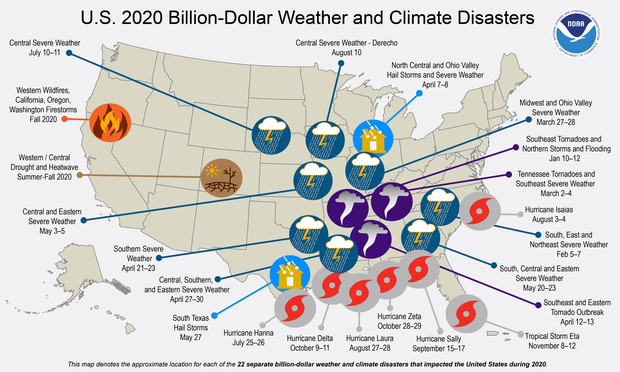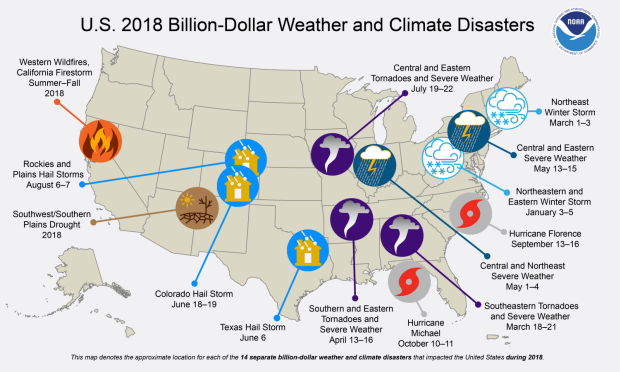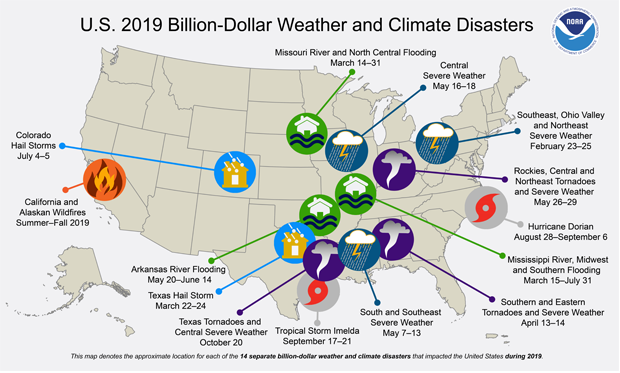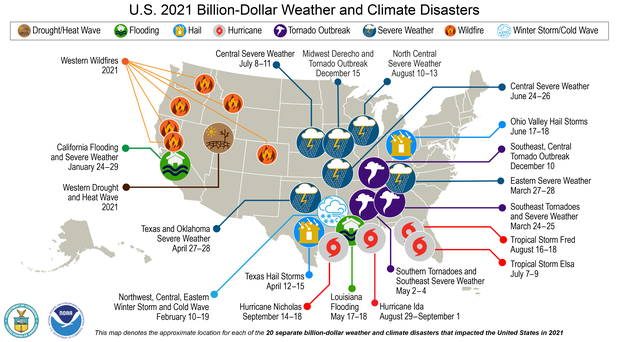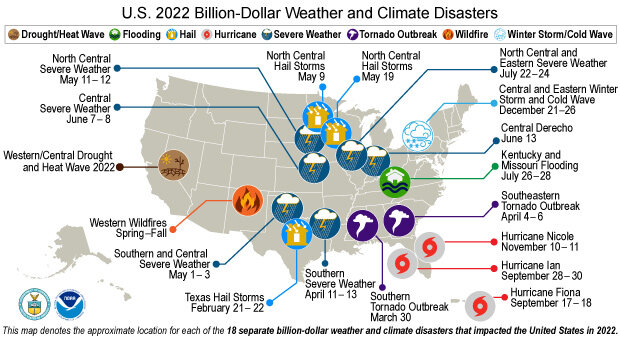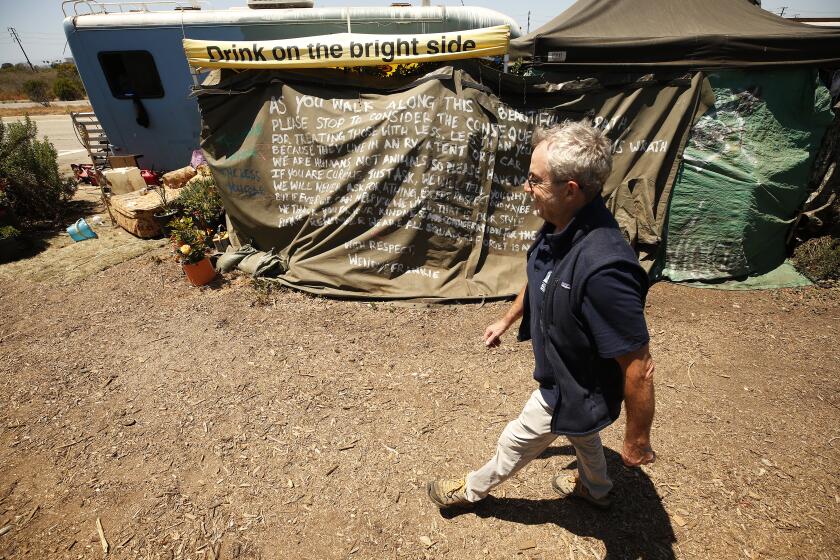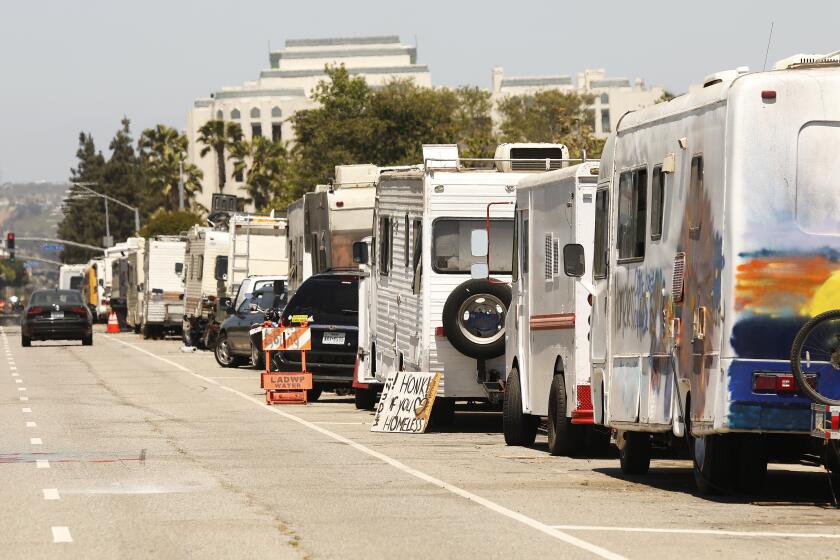SO many people have been displaced through not fault of their own over the past 10 years! The fires, the flooding, the Tornados and the Hurricanes. That does not even take into consideration all the other causes or people losing their livelihood and their homes. Outsourced, Downsized, Laid Off, Quarantined, Replaced by Automation/Robotics, undercut by cheap migrant labor people are losing everything.
Lately there has been a lot of interest in what happened to the homeless in San Francisco. And well there should. I am glad to see so many people interested. Many people believe that homeless people are addicts, losers and low life’s. That just isn’t true. I have met so many homeless people and their stories would give you nightmares. The truth is that most people live just a paycheck or two away from being homeless. OR, a natural disaster away, or a pandemic away, or economic crash away… even just a power outage away. Ask the people in Texas who got electric bills that were in the thousands of dollars for the power outage a few winters back. All it really takes for you to lose your home is for the Government to make it mandatory for you to submit to their Orwellian demands or lose access to money, food and housing.
The foxes have eaten the Farmer and are RUNNING EVERYTHING, INCLUDING THE HEN HOUSE!
WHAT WILL YOU DO? Be Prepared
The State of the Nation
spacer
Folks, there is a very real and palpable conspiracy to first extract everything they can from you and then KILL YOU and TAKE YOUR SOUL. If you find that funny or ridiculous, I feel sorry for you.
IT is too late to stop it now. It will come to pass. To be forewarned is to be prepared. There may be nothing you can do in the physical to prepare…but the only preparation that will really make a difference is SPIRITUAL. NO ONE can save you from what is about to hit us. EXCEPT GOD! THE ALMIGHTY, LIVING CREATOR who loves you.
Those in power have been doing some horrendous things to us as a society for the 50 years. Most of it has gone unnoticed except for those who are spiritually alive and discerning. Everything they have been doing up until now has been practice. They have been testing their devious and evil tools, weapons, devices, events and plans. Most people don’t care, as long as it doesn’t/didn’t affect them directly. Most people believe that as long as they mind their own business and don’t break any laws they are safe.
I hate to tell you, there is no peace or safety in the NEW WORLD ORDER. NOWHERE TO HIDE. IT IS COMING TO ALL WHO DO NOT BOW DOWN TO THE EVIL ONE, and SURRENDER…their hearts, minds, bodies and souls.
FORGET ABOUT THE LAWS as we have known them There is no LAW or JUSTICE. The EVIL ONES make up the rules now, an they create them out of thin air to suit their AGENDA.
People, if you are not aware of what is happening to the homeless, you better find out!! If they can do it to those most helpless and vulnerable among us, an no body cares… GUESS WHAT? THEY WILL DO IT TO YOU!
They are using every tool at their disposal to remove from you every means of support and take away your right to own ANYTHING!! They are driving you out of your homes and forcing you out of your automobiles.
Do you know that the DRUID’s punished the rebellious by denying them fellowship with anyone, food, shelter, water, shoes, clothes and even a blanket? They basically condemned you to die, slowly and miserably. DRUID’s were considered the enlightened ones. They created College and Monasteries, they were the poets, the seers, the judges and advisors to the Kings. They CONTROLLED EVERYTHING and that is what the modern day “ELITE” want — TOTAL, AUTHORITARIAN CONTROL of every aspect of your life!
THEY WANT YOU AT THEIR MERCY!!
Don’t believe it yet?? Maybe by the end of this post you will. THIS IS NOT FEAR MONGERING. I gain nothing if you become fearful. I serve the MIGHTY GOD, and my purpose is to WARN PEOPLE. TO POINT THEM TOWARD SALVATION and TO PRAY THAT THEY COME INTO RIGHT STANDING WITH GOD!
If GOD be for you… WHO CAN BE AGAINST YOU? Those who are truly HIS children, have NOTHING TO FEAR. HE PROMISES to bring us through, whatever we must face. TURN TO HIM AND BE SAVED!!

spacer
NOAA’s National Centers for Environmental Information (NCEI) has released the final 2020 update to its Billion-dollar disaster report (www.ncdc.noaa.gov/billions), officially confirming what communities across the nation experienced first-hand: 2020 was a historic year of extremes.
There were 22 separate billion-dollar weather and climate disasters across the United States, shattering the previous annual record of 16 events, which occurred in 2017 and 2011. The billion-dollar events of 2020 included a record 7 disasters linked to tropical cyclones, 13 to severe storms, 1 to drought, and 1 to wildfires. The 22 events cost the nation a combined $95 billion in damages.
In 2020, the United States experienced record-smashing 22 weather or climate disasters that each resulted in at least $1 billion in damages, including a record 7 linked to landfalling hurricanes or tropical storms. NOAA map by NCEI.

2020 would have been during the Pandemic when many people could not pay their rent because they were not allowed to leave their homes or to go to work. And of course by 2023 we have seen a number of disasters and wicked weather, as well as jobs lost and homes foreclosed.
“This year (2023) a lot of the action has been across the center states, north central, south and southeastern states,” Smith said.
Smith had thought the 2020 record would last for a long time because the 20 billion-dollar disasters that year smashed the old record of 16. However, he no longer thinks this after that record was broken within three years.
In 2023 (as of December 8), there have been 25 confirmed weather/climate disaster events with losses exceeding $1 billion each to affect United States. These events included 1 drought event, 2 flooding events, 19 severe storm events, 1 tropical cyclone event, 1 wildfire event, and 1 winter storm event.

Of course, 2018 had a significant number of disasters which affected the homeless population. We must not forget the California Campfire and all the property and lives lost. There were thousands of people that have never been accounted for from that event.
During 2018, the U.S. experienced a very active year of weather and climate disasters. In total, the U.S. was impacted by 14 separate billion-dollar disaster events: two tropical cyclones, eight severe storms, two winter storms, drought, and wildfires. The past three years (2016-2018) have been historic, with the annual average number of billion-dollar disasters being more than double the long-term average. The number and cost of disasters are increasing over time due to a combination of increased exposure, vulnerability, and the fact that climate change is increasing the frequency of some types of extremes that lead to billion-dollar disasters.
This map depicts the general location of the fourteen weather and climate disasters assessed to cause at least one billion dollars in direct damages during 2018.
During 2019, the U.S. experienced a very active year of weather and climate disasters. In total, the U.S. was impacted by 14 separate billion-dollar disasters including: 3 major inland floods, 8 severe storms, 2 tropical cyclones (Dorian and Imelda), and 1 wildfire event. 2019 also marks the fifth consecutive year (2015-19) in which 10 or more separate billion-dollar disaster events have impacted the U.S.
The general location of the 14 weather and climate disasters to have caused at least one billion dollars in direct damages during 2019. Map by NOAA NCEI.
In 2021, the U.S. experienced 20 separate billion-dollar weather and climate disasters, putting 2021 in second place for the most disasters in a calendar year, behind the record 22 separate billion-dollar events in 2020. What really made 2021 stand out was the diversity of disasters:
- 1 winter storm/cold wave event (focused across the deep south and Texas);
- 1 wildfire event (combined impacts of wildfires across Arizona, California, Colorado, Idaho, Montana, Oregon and Washington);
- 1 drought and heat wave event (summer/fall across western U.S.);
- 2 flood events (in California and Louisiana);
- 3 tornado outbreaks (including the December tornado outbreaks);
- 4 tropical cyclones (Elsa, Fred, Ida and Nicholas); and
- 8 severe weather events (across many parts of the country, including the December Midwest derecho).
In 2021, the United States experienced record-smashing 20 weather or climate disasters that each resulted in at least $1 billion in damages. NOAA map by NCEI.
In 2022, the U.S. experienced 18 separate weather and climate disasters costing at least 1 billion dollars. That number puts 2022 into a three-way tie with 2017 and 2011 for the third-highest number of billion-dollar disasters in a calendar year, behind the 22 events in 2020 and the 20 events in 2021. It was another year with a high diversity of destructive disasters:
- 1 winter storm/cold wave event (across the central and eastern U.S.).
- 1 wildfire event (wildfires across the western U.S. including Alaska).
- 1 drought and heat wave event (across the western and central U.S.).
- 1 flooding event (in Missouri and Kentucky).
- 2 tornado outbreaks (across the southern and southeastern U.S.).
- 3 tropical cyclones (Fiona, Ian and Nicole).
- 9 severe weather/hail events (across many parts of the country, including a derecho in the central U.S).
In 2022, the United States experienced 18 separate weather or climate disasters that each resulted in at least $1 billion in damages. NOAA map by NCEI.
ARE YOU BUYING THEIR ESTIMATED HOMELESS NUMBERS ON THE MAPS AT THE TOP O THIS POST? I AM NOT!!

- Orwellian Fema Barges resembling Floating Prisons were sent to Port Arthur to house homeless people. Really eerie what’s going on in this country lately. The bad guys seem to not care any more and are showing their hands. Source
Revelation 2:10 (KJV) – Fear none of those things which thou shalt suffer: behold, the devil shall cast some of you into prison, that ye may be tried; and ye shall have tribulation ten days: be thou faithful unto death, and I will give thee a crown of life.
December 18th, 2020.
I am not in this video but I was there. I went with a group to try to help. It was an experience I will never forget. The first night I could not sleep. The screams, car alarms going off and gunshots seemed never to stop.
I carried and slept my rifle at all times. I saw FEMA barges leave with people on them and come back empty. I was never able to track where they were going and now cannot even verify they were there. I saw people going into shelters but never saw anyone leave a shelter. Homeless people vanished.
The Red Cross food trucks would not feed people if they could help it and would throw away the food. I saw levies breached on purpose to flood areas. I later figure out this was to wash the bodies of the drowned (executed, murdered, whoever) out to sea. They did it to “flush” the evidence.
I was with a group that was denied access in to help people that were drowning and most likely being executed. I saw bodies floating that were shot in the head (drowned). Men, women and children. It was 5 days and 4 nights I will never forget.
I have never told anyone about my experience. It is hard to talk about. I know that Harvey was a product of HAARP and weather warfare. How? I watched it happen and saw the results.
spacer
1.9M subscribers
65,989 views Aug 15, 2023 #wildfires #maui #hawaii
Crews continued the search for the more than 1,300 people still missing on Maui. Only four of the 99 confirmed dead had been identified as of Tuesday, with the death toll expected to climb in the coming days. “CBS Evening News” anchor and managing editor Norah O’Donnell reports.
spacer
5.12M subscribers
▶ Follow Kevin below! Twitter:  / kevinvdahlgren YouTube: @truthonthestreets Website: https://www.truthonthestreets.org/sup… ▶EMAIL ME VIDEO IDEAS AND WIN $500: Send me the story / idea / and contact information for the interesting person or place that would make a great youtube video idea! If I use your idea, I’ll shout your email out and send you $500! Email at ideas@oliveiraentertainment.com FOLLOW ME ON INSTAGRAM – @tyleroliveiraofficial FOLLOW ME ON TWITTER – @tyleraloevera FOLLOW ME ON TIK TOK – @tyler.oliveira for BUSINESS INQUIRIES: TylerOliveira@night.co For other brand opportunities / if you want to get in contact with me: Contact@oliveiraentertainment.com
/ kevinvdahlgren YouTube: @truthonthestreets Website: https://www.truthonthestreets.org/sup… ▶EMAIL ME VIDEO IDEAS AND WIN $500: Send me the story / idea / and contact information for the interesting person or place that would make a great youtube video idea! If I use your idea, I’ll shout your email out and send you $500! Email at ideas@oliveiraentertainment.com FOLLOW ME ON INSTAGRAM – @tyleroliveiraofficial FOLLOW ME ON TWITTER – @tyleraloevera FOLLOW ME ON TIK TOK – @tyler.oliveira for BUSINESS INQUIRIES: TylerOliveira@night.co For other brand opportunities / if you want to get in contact with me: Contact@oliveiraentertainment.com
Google Earth – Hawaii Fema Barges Visible In google earth
spacer
August 6th, 2023.
Artificial Hurricane Harvey Irma Maria Jose!Untold Truth About FEMA Death Camps, Barges in Texas Hurricane Harvey! Walmart Kill Plans Exposed! Martial Law Initialed! FEMA Camps, Death Barges Jailing up Hurricane Victims! Martial Law Kill Plans Initiated! FEMA Barges arrived Arthur, Texas to round homeless victims up. Walmart Prisons prepared to jail Texas’ Homeless people!Untold Truth About What Really Happened In Texas, FEMA And Artificial Hurricane Harvey Irma Maria Jose – WATCH TIL THE END!
Link: https://www.tiktok.com/@spookielady88/video/7303000014396198187
@spookielady88 Missing homeless in Tulsa Oklahoma #fyp #fypシ #fy #foryoupage #truestory #creepy #wherearethehomeless #whitevans #governmentprograms
spacer’
Link: https://www.tiktok.com/@jpall20/video/7309586111192419627
spacer
@jpall20 Where are these homeless people going? Creators that are covering this: @Passive Restraint Productions @Metal Joe @MrCrunchWaffle #homelessness #homelessman #verizon #classaction #disney #bobiger #germany #germanyvsamerica #propoganda
♬ Spooky, quiet, scary atmosphere piano songs – Skittlegirl Sound
spacer
December 12th, 2023.
“THIS IS THE MIGHTY USA”!…..”USA USA USA”!!!…PRETTY PATHETIC LOOKING NOW EH?…”IN EVERY NOOK AND CRANNY OF THE MIGHTY NWO DEMOLITION AGENDA USA (BABYLON)…”….WTFU “U”..(YOU)…”S”..(STUPID)..”A”!..(ARSEHOLES)…
spacer
MORE Homeless MISSING! Where do you think they went?? Leave a Comment!
December 12th, 2023.
Did San Francisco Just Round Up/ Exterminate All The Homeless People?! How’d They VANISH?
Play: https://rumble.com/v3wtnia-bombshell-did-san-francisco-just-round-upexterminate-all-the-homeless-peop.htmlUSPatriot2021 1 week ago

It would be great if they actually did what he is saying and put them in shelters. But, it doesn’t answer the question. Why is there not a single video of the cleanup? Why can family not reach people that are now missing? Even if they asked them to stay away for one week like he said, they still would have their cellphones ...unless they threw them in the garbage too! Also, why would they force people who are just driving around the area into white vans? They are not homeless on the streets? What are they trying to hide? There are a lot of questions! I fear for these people and pray that they are all right. Not everyone that is homeless is bad. Sometimes bad things happen to good people and they just have nowhere to go. ciabatta 1 week ago My sources in Rio de Janiero were telling me in real time back in 1992 as the city prepared for the UN WORLD SUMMIT, that their military conducted a mass cleansing op disappearing the local Street Urchins who were all youths blamed for most crime preying on tourists. First they all vanished over night, then we were told they had been safely taken to an island convent in the bay, to house them until the summit was over and of course around 6 months later we heard that mass graves had been found.
spacer
Apr 6, 2023 —
[anvplayer video=”5171406″ station=”998122″]
ALBUQUERQUE, N.M. — There is a bit of a mystery on the streets of Albuquerque. Multiple nonprofits that help the homeless population say people are disappearing. They believe these disappearances are part of a scam.
“Until we do something, this is going to keep happening, people, our Indigenous people are going to keep going missing from the streets,” said Christine Barber, executive director of Street Safe New Mexico.
Barber went on to say vans pull up to people experiencing homelessness promising rehab and housing in Arizona. Those who have made it back to Albuquerque, say it was all a lie.
“We are losing a huge number of the Native population out here in the street and we don’t know where they are, we really don’t,” Barber said.
Street Safe New Mexico says this is an issue that has been going on since January. These scammers, usually in white vans, convince homeless people they can get free rehab and housing if they come with them to Arizona.
“Once in Arizona, people were made to sign up for a specific type of Native health insurance and also sign up for Arizona food stamps, then kicked out and stranded in Arizona,” Barber said. “The whole scam is they would use that person’s name in their so-called rehab but use that person’s name to pretend they are a patient, then bill for services that they rendered.”
What started as one van has increased exponentially in the last couple of weeks.
“Everyone knows someone who has been taken – we started taking down reports from people noting what cars and it has just gotten so much worse in the past few weeks,” Barber said.
Barber was even able to share a business card that one van was handing out to homeless people, so KOB 4 gave them a call. While they didn’t answer, they did ask to text.
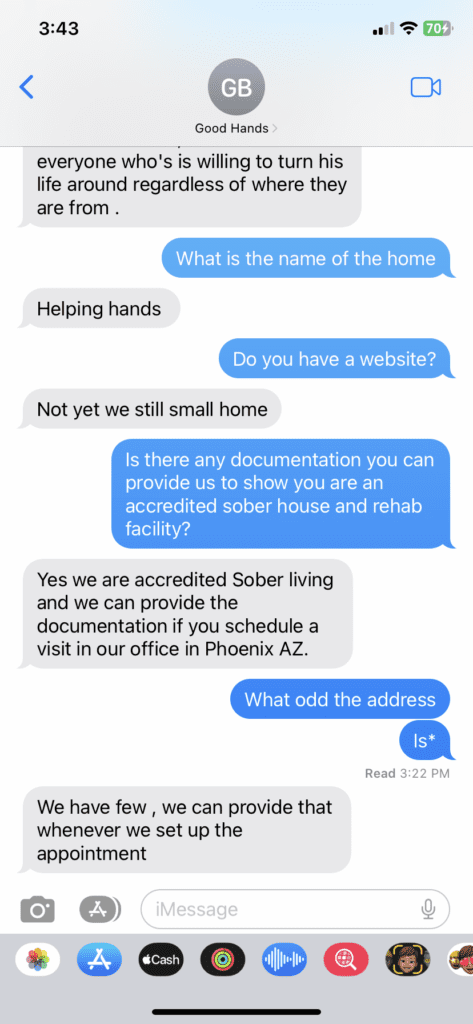
KOB 4’s Spencer Schacht told them he was a reporter working on a story about their facility and there were some red flags. The name they gave did not match the business card, they said they don’t have a website, and when he asked for an address, they said he would have to set up an appointment.
“Hi, this is Erik,” a man said on the other end of the line.
Schacht explained he was a reporter looking into these rehab facilities. At first, Erik denied being a part of these organizations – but a few moments later he changed his story.
“It’s not like I took someone and they are missing, I took like 3 homeless people and we were just going to Phoenix,” Erik explained. “I have a friend there, who, what they do is great work, it’s helping people it’s a treatment facility to get people off the street to get the treatment.”
When KOB 4 asked for more information about the facility he said he had given enough information already. And when KOB 4 asked for the name of the sober house, he hung up.
After Erik hung up, KOB 4 checked with local law enforcement to see if they are investigating these disappearances.
APD says it’s out of their jurisdiction because these scammers are leaving the city and crossing state lines — but the Albuquerque FBI field office says they are working closely with the FBI office in Phoenix who has an open investigation into these insurance and rehab scams.
By Kevin C. Corinth S
As a nation, we are successfully reducing homelessness in this country, especially for those who have been living on our streets as a way of life. There is still a tremendous amount of work ahead of us but it’s clear our strategy is working and we’re going to push forward till we end homelessness as we’ve come to know it.










Sep 22, 2017 —
Following a police operation, even officers seem puzzled by the whereabouts of hundreds of people who lived around a downtown emergency shelter
The streets around Salt Lake City’s downtown emergency shelter have long been home to hundreds of homeless people. In recent weeks, though, nearly all seem to have vanished following a police operation. Local residents are mystified as to where they’ve gone.
The Salt Lake City police chief, Mike Brown, said he had visited parks and the Jordan river, which threads its way to the Great Salt Lake and has homeless camps dotted along its banks, but he hadn’t seen an influx from downtown. Sgt Brandon Shearer has been up in a police helicopter looking for camps and seemed equally perplexed when asked where the people had gone. “I don’t know,” he said. “That’s a good question.”
Advocates, for their part, fear a humanitarian crisis is brewing.
The unfolding drama is all the more remarkable considering that several years ago, national media reports published claims by Utah that it had “won the war” on homelessness there, at least when it came to housing those who had been outside the longest. Jon Stewart ran a laudatory piece titled “The homeless homed”. But the picture wasn’t quite that simple.
While the country’s most prominent homeless crises are in coastal cities – New York, San Francisco, Los Angeles – the mountain-ringed capital of the Mormon church has also long struggled to house or, in the view of some, has politely ignored its homeless population. The Republican legislature in Utah is fond of the philosophy of pulling yourself up by your bootstraps, and struggling not-for-profit groups pick up the slack when it comes to homelessness funding.
Rather than ending homelessness, the city in fact housed a subset of its homeless residents, an important step but only an intermediary one in its alleviation efforts. Since then, as rents have risen and the minimum wage has remained stagnant, more and more families have found themselves on the street. A count last year found about 2,200 people in the region in total on any one night.
In recent months, Salt Lake City has been convulsed by the situation around the downtown shelter, called the Road Home, located in a onetime warehouse district now host to high-end condos and shops.
Even though officials say most of those living there are blameless – forced there by economic circumstances, mental health issues or opioid addictions – the area has been prone to violence. Police shot a teenager wielding a metal broomstick handle last year, and there were three unrelated killings in July and early August, one involving an unprovoked attack on a homeless man with a paving stone.
As a result, in mid-August, Utah flooded the area with law enforcement officers as part of a two-year, $67m public-safety operation. “You throw 150 cops in there, it’s going to ruin the party,” Brown, the police chief, said dryly.
Cue the abrupt dispersal of many of the downtown homeless residents to parts unknown. More than 1,200 people have been arrested, over half on drug charges, according to police, but 900 were later released to the streets. Officials leading the operation pledged to provide help for homeless residents in the form of treatment, housing and jobs. But in the weeks after the launch, municipal and state officials could only line up 37 treatment beds.
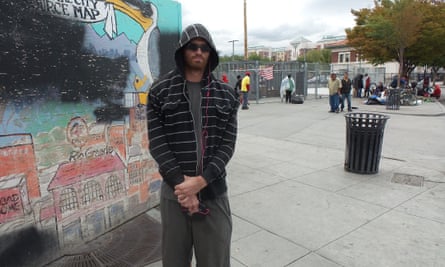
One theory holds that the former inhabitants of the area left the state, another that they somehow found homes, yet another that they dispersed into various neighborhoods.
“It’s not doing what they want,” said Brema Jones, a homeless woman sitting with her 71-year-old mother and two friends at the edge of Pioneer Park, two blocks from the shelter, as wind whipped the branches beneath the darkening sky. “It’s not helping druggies, not getting them into rehab. Everybody is spreading out.”
Homeless people leaving a major jail have been reported as far afield as the airport and empty fields on the west side of the city. “The rhetoric from the mayor and policy workers was ‘We’re trying to help,’” said a west side activist, Michael Clara. “Well, you should help them downtown. Don’t scatter them and then try to help.”
An outreach worker with Volunteers of America, Ethan Sellers, who is based at the main downtown library, said he had struggled to address the fears of those with schizophrenia. “You’re trying to help them understand they’re not under attack.”
Advocates and community activists are anxious about the months to come. Few of the people arrested and then released have returned to the Road Home shelter, and the freezing winter weather is approaching.
The long term impact of the sweep is not year clear. Pamela Atkinson, an acclaimed local homeless advocate, said that while some of the inhabitants had left the state, others “of my homeless friends” have started to return to the shelter. “Now it’s safer, they’ve come back.”
“They’ve cleaned the place up,” said Zach Curry, who has been homeless for 10 years, and was hanging out by the shelter listening to a battered portable CD player. “People were committing suicide on drugs left and right. It was getting a bad rep for Salt Lake City.” He thinks the continuing police presence is challenging, “but it’s got to be done. That’s what a lot of us think about it.”
While observers continue to wonder what has become of the population who lived around the Road Home until only last month, the state is transforming the physical landscape there, even though it plans eventually shutter the shelter and open three smaller ones in the region.
Any homeless people who want to return are welcomed back – but there are now 10ft high chain link fences and floodlights that at night render the shelter akin to a high-security border crossing.
Or perhaps a prison. While officials describe part of a recently blocked off street in front of the shelter as a “safe space” where vulnerable, drug-free people can get help, social workers have taken to calling it “the yard”.
Do you have an experience of homelessness to share with the Guardian? Get in touch
spacer
Homeless People Are Disappearing – YouTube
YouTube · Danny Rayes
Column: ‘Enough is enough.’ Why RV encampments might finally start disappearing in L.A.
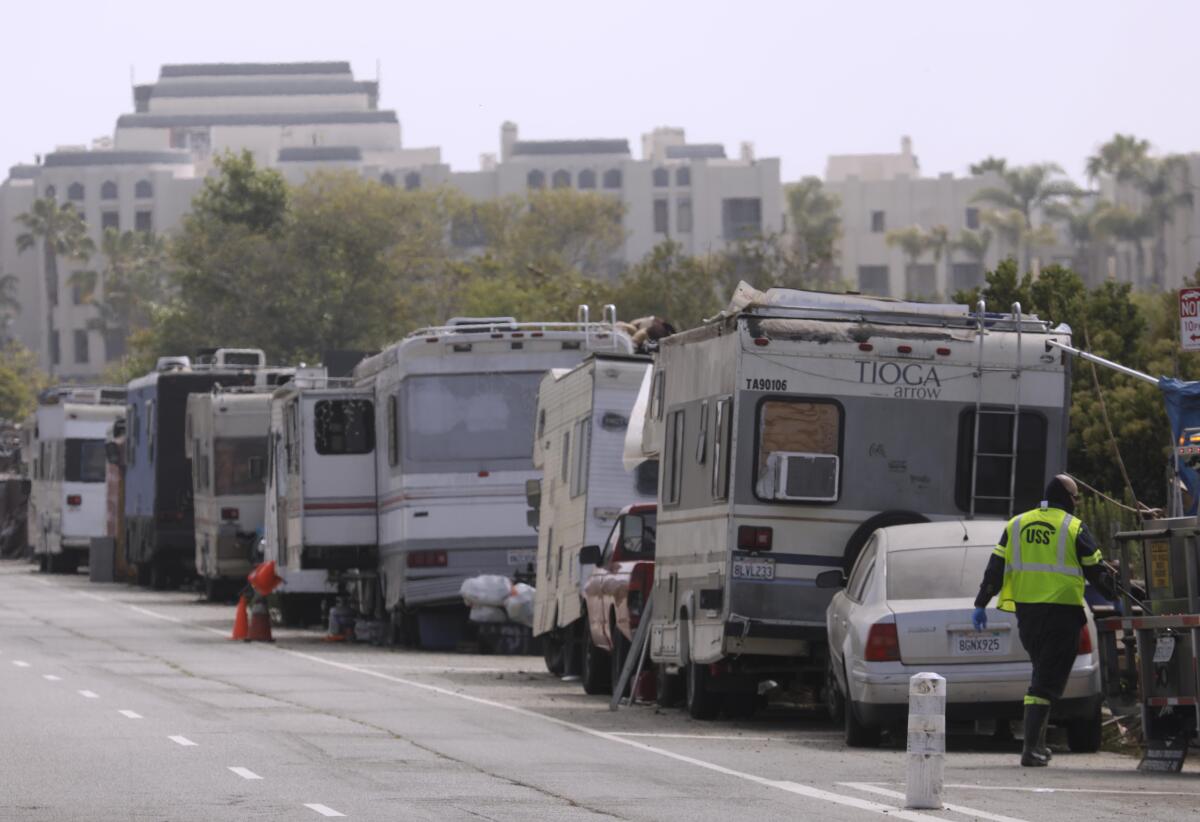
For almost three years, “home” for Wendy Lockett was a dilapidated RV.
Her “community” was a close-knit group of men, women and dogs living in equally dilapidated RVs, and her “neighborhood” — much to the aggravation of many on the Westside of L.A. — was a trash-strewn encampment on Jefferson Boulevard alongside the Ballona Wetlands.
I used to see Lockett every now and then — usually after some tragedy, like the fire in February that killed her good friend Woody Akiedis. “He was very diplomatic,” I remember her telling me wistfully, standing next to the burned-out husk of his RV.
Then, one morning this summer, it was Lockett’s “home” that went up in flames.
She wasn’t there. “She had a rodent infestation,” explained Scott Culbertson, executive director of the Friends of Ballona Wetlands. “So she went to stay with a friend.”
I haven’t seen Lockett since, and there’s a good chance I never will again.
The very same morning that her RV caught fire, an army of workers cleared much of the encampment in the name of the Jefferson Trail Rehabilitation Project. They towed vehicles, coaxed encampment residents into hotels and left behind concrete barricades, metal fencing and gigantic “no parking” signs.
Lockett’s “community” is now gone. And with it, the likelihood that she’ll be able to find another dilapidated RV to rent or use as a “home” and park it in her “neighborhood,” as she has done for others.
“We’ve got to be willing to stand up and say enough is enough,” said L.A. City Councilmember Traci Park, who ran on a promise to get rid of RVs. “The missing ingredients have been the will to get it done. And the willingness to say when something has become a problem, like we saw at Ballona Wetlands, where you’ve got extensive environmental damage being caused by ongoing public safety issues.”
To be sure, this is just one encampment. But what’s happening on the Westside is worth watching because, for better or worse, it’s likely to be the model that both city and county officials will use to address a type of homelessness that has quickly become an entrenched crisis — one that’s largely of L.A.’s own making.
Consider that, back in 2019, the number of people countywide who were living in cars, vans but mostly RVs was about 10,000, according to data compiled by the Los Angeles Homeless Services Authority. Now, it’s about 14,000.
Why the increase?
Broadly speaking, it’s the fault of officials at all levels of government. They listened to NIMBYs and didn’t build enough housing to meet the need, leading to astronomical rental prices that have pushed the poorest and most vulnerable among us onto the streets.
But here is where the story of good intentions and unintended consequences begins.

More narrowly, the increase can be traced to the pandemic-era decision, made by city officials in January 2021, not to tow vehicles being used as homes, lest we expose more people to COVID-19. Not that there was much towing going on anyway in 2020. Which is why, by the time I met Lockett on a hot afternoon in June 2021, weeds were growing around the tires of her RV.
It took another year for the Los Angeles City Council to feel it was safe enough to reverse that decision on towing, and only after receiving a slew of complaints about fires, piles of trash, human waste and needles.
The plan was to prioritize removing RVs that were unregistered, inoperable and dangerous. But a lack of heavy-duty tow trucks and cheap places to store oversize vehicles prompted numerous delays. So many delays, in fact, that L.A. got a mostly new council and new mayor while we waited.
“We have not resolved the RV issue yet,” Mayor Karen Bass told me in March. “But we absolutely will.”
In the meantime, a sense of permanency has pervaded many encampments. And why not?
At the Ballona Wetlands, it led to the creation of a community, of which Lockett called herself the “sheriff.” Longtime neighbors looked out for one another, and grieved and laughed with one another. Such bonds are important, especially on the streets. And yet, the stronger their community got, the more it seemed to reinforce what advocates say is a common belief among RV dwellers: that they aren’t really homeless and, therefore, don’t need a hotel room, making the job of outreach workers even harder.
The de facto permanency also had the unintended effect of creating a booming market for so-called vanlords — people who lease RVs for a few hundred bucks a month, sometimes full of mold, without running water or working toilets, and park them, confident that they won’t be towed.
“It speaks to the desperation,” said Va Lecia Adams Kellum, chief executive of LAHSA. “That people are literally paying rent to be in a dilapidated RV just shows you the level of despair and need for us to build affordable housing.”
Indeed, these days, even people with full-time jobs live in RVs because that’s all they can afford.
Exactly how big this market is and who the main vanlord players are remain something of a mystery, though LAHSA is trying to figure it out.
The City Council recently voted to draft an ordinance that would crack down on the renting of RVs, particularly dilapidated ones parked on public streets. More money, including from the state, also has been set aside for vehicular homelessness intervention.
Adams Kellum calls this “momentum.” But don’t expect actual speed in unraveling the many unintended consequences that enabled the spread of RV encampments all across Los Angeles.
The only model that seems to work requires months of planning, and the cooperation of multiple government and nonprofit agencies. Outreach workers, law enforcement, sanitation, towing companies, bus drivers and even representatives from the California Department of Motor Vehicles must be present for each operation.
And even with all that, few who leave their RVs will do so knowing for certain when they’ll be able to move from a temporary hotel room into permanent housing. It’s still very much a leap of faith in a system that, so far, has failed far more people than it has helped.
“We now realize it’s more complicated than just someone is in a vehicle,” Adams Kellum said.
Mar 23, 2022 —
“We still have to fight a lot of people really need help there,” said Otzoy.
The Los Angeles Housing Services Authority has not issued a comment as of yet.
Why America Cannot Ignore the Missing Homeless
lauthmissingpersons.com
Aug 21, 2019 —
The numbers are staggering. According to the Housing and Urban Development (HUD), there were approximately 554,000 homeless people living somewhere in the United States on any given night last year. Sadly, that number is rising.
According to Forbes, cities with the highest rate of homelessness are in one of the five states – California (129,972), New York (91,897), Florida (31,030), Texas (25,310), and Washington (22,304). Not surprising is the problem has become much more visible in urban areas and over half of all homeless people live in one of the country’s 50 largest cities.
Homelessness is an issue that permeates many societies throughout the world but seems to be a unique struggle in the United States. One might be surprised to know, the Big Apple has one of the lowest levels of unsheltered homeless at 5% while Los Angeles, 75% of people were found in unsheltered locations.
People who are homeless are often not able to secure and maintain regular, safe, and secure housing. Many become transient, never staying in one place for any length of time . . . wandering the streets, from city to city.
Who are the Homeless?
People often become homeless when the economic issues collide with their housing issues, to include other factors such as domestic violence, physical disability, mental illness, addiction, transitioning into adulthood and strains on relationships.

(Many homeless people start out with jobs and homes; then social and economic factors intervene.)
Something that we see more and more often these days is homelessness caused by untreated Post Traumatic Stress Disorder (PTSD),along with untreated depression and other serious mental illness.
According the Mental Illness Policy Org., in January 2015, the most extensive survey ever undertaken by the U.S. Department of Housing and Urban Development (HUD) revealed 250,000 homeless individuals suffered from varying mental illness.That is 45% of the total homeless population.
At any given time, there are many more people with untreated severe psychiatric illnesses living on the streets than are receiving care in hospitals. Approximately 90,000 individuals with schizophrenia or manic-depressive illness are in hospitals receiving treatment for their disease.
No vision haunts America’s conscience more than the sight of the street people . . . the irrationality and anguish that grip so many of these individuals leap out during any encounter, whether in Washington or Albuquerque.” ~ Senator Pete Domenici (R-NM)
How Many Homeless are Missing?
As of April 30, 2018, there were 86,927 people in the United States listed as missingin the National Crime Information Center (NCIC) at the Federal Bureau of Investigation. There are no statistics available about missing persons and homelessness being a factor in the disappearance.
To further complicate any understanding of the numbers, homeless shelters and service providers ride a very delicate line.
Due to privacy-related HIPPA regulations, tracking a person that is navigating the hodgepodge of homeless services can be nearly impossible. Ya, HIPPA does not protect anyone. The only ones who can’t get your records is you or your loved ones. HIPPA should be dissolved. How can you protect your children from predator’s when you cannot even access the information on their records, even if it is pertinent to the issue.
Providers do not report entry logs with missing person systems because of HIPPA. Also, there is no training to use the counts to collect information and data that can help identify known missing persons.
As the law stands, adult persons can come and go as they please.Unlike with missing children, there is no statute requiring law enforcement to even take a report, though in some state’s legislation has been passed to change that and improvements being made.
Organizations like Missing and Homeless are urging communities to work collaboratively with the homeless with direct outreach efforts beyond that system that is in place. Small providers, nonprofits and homeless individuals themselves are more successful in assisting with the search efforts of other missing people.
What Happens When a Loved One is Homeless and Goes Missing?

(Bridget Pendell vanished April 2003 and despite hundreds of leads she has never been seen again. .)
There is nothing more intense and emotional than not knowing where someone you love is. The ambiguity alone can cause extreme emotional turmoil. Families are left frantically searching, hanging fliers, begging for media exposure, and talking to anyone who will listen in an attempt to find their missing loved one.
Bridget Pendell may look like a wasted-thin drug addict and could be wandering the streets of San Francisco or turning tricks in Portland or Phoenix. Or she could be dead, just another unidentified missing person buried in the city’s Potter’s Field.
Her sister Jackie Horne wants to know what happened to her sister. She has spent the last 15 years searching for Pendell, traveling from New York to San Francisco to scour the city for her missing sister.
Pendell would be 46 now and shows just how easily homeless can disappear. Horne travels the hard-core sections of the city where women sell their bodies for sex and drugs, leaving missing person posters on mailboxes, giving out her missing person posters and scanning the worn-out faces. Horne quietly asks for help from anyone who will listen.
Pendell was a beautiful young girl who grew up in Plattsburg, New York and graduated high school before becoming a former Barbizon model student. She eventually became a nurse and met the “man of her dreams” married and had a baby girl they named Sasha. Pendell had met some friends who followed the Grateful Dead, and she joined them and began following the band throughout the country.

(Followers of the Grateful Dead followed the band to different locations throughout the country.)
Pendell’s new lifestyle broke the marriage apart as her husband would have no part in the lifestyle, she was dabbling in. Following their divorce, Pendell began wandering between New York, Kansas, and Florida, sometimes with Sasha. There she began using heroin and cocaine and by 1996, she had succumbed to drugs and prostitution.
Pendell’s mother took Sasha while Pendell continued to live in California.
Her last chance . . . the family decided the only way to save Pendell was to have her enter a two-month drug rehabilitation program. If she refused, no one was certain what would happen to her.
She accepted the help and entered into Seton Health System rehab center. A doctor’s report explaining Pendell’s condition read: “Above average intelligence.” She was released from rehab two days early and immediately left to San Francisco.
From the answers Horne receives while out searching, it seems Pendell is known everywhere, yet a phantom in a dark world few can imagine.
“I saw her a couple of days ago, I swear,” a prostitute named Crystal said as she brushed on mascara, getting ready to hit the chaos of Mission Street. “She works this street. Shoots up heavy.” Another man said he believed Pendell went by the nickname Butterfly.
Now joining in the search is Pendell’s daughter Sasha who despite her mother vanishing, has maintained Straight A’s at school. Growing up without her mother she did know her mother was on drugs. “Maybe she feels bad . . . maybe she doesn’t want to come back into my life while she’s on drugs . . . but if I could see her, I would tell her I wasn’t mad.”
Leads have been received from across the country, but most have led back to San Francisco and Santa Cruz. Another possibility is that known rapist, Jack Bokin killed Pendell. Horne reached out to him and he never denied killing her. It is unknown what happened to Pendell and if she is still alive out there somewhere.
Horrified seeing the numbers of other missing, San Francisco authorities explained to Horne that every year, hundreds of homeless die in the city, most identified.
Nobody knows exactly how may chronically homeless are missing. Losing touch with family and friends they are joining a steady stream of panhandlers and those sleeping on the sidewalk.
Going under the radar, with no identification, no address, no welfare checks they are impossible to follow.
According to the California Department of Justice, more than 17,000 women like Pendell are reported missing in California every year, but no records are kept about how many are homeless. Nearly 300 are found deceased, and although most are found safe, approximately 100 remain missing – whereabouts unknown.
Morgues throughout California maintain remains of over 2,000 people, dating back 45 years, who have never been identified.
“We have about two bodies per year we can’t identify, and we cremate another 160 because we make an identification but can’t find relatives to claim them.,” said Herb Hawley, administrator at the San Francisco medical examiner’s office. It is a similar story throughout the country.
It’s just like she vanished off the face of the earth,” said Horne as she walks up and down a line of homeless men and women waiting for lunch at a local church. “These guys in line, all those homeless people around downtown – they have relatives, too, and hopefully some of those relatives know where they are. But Bridget? Nothing.”
California’s Plan to Disappear the Homeless
naked capitalism
Jan 28, 2023 —
By Conor Gallagher
Elected officials continue to turn to draconian measures to disappear homeless people. In addition to passing a wave of laws across the country criminalizing homelessness, California is moving ahead with a plan that will allow the state to force the unhoused into court-ordered treatment programs for a period of up to two years – and potentially much longer. (New York is considering a similar law.)
The California law is not designed to actually help the homeless or stop more people from becoming homeless, which would actually require resources and/or taking on powerful interests like the private equity-dominated real estate rental market, the healthcare industry that bankrupts people, major corporations that pay poverty wages, etc. Let’s remember that 40-50 percent of people experiencing homelessness are employed. Instead these laws are simply designed to remove from view the people our society has chewed up.
CARE is slated to start rolling out later this year, but the plan is still facing opposition in the courts. Just this week Disability Rights California and other civil rights and disability advocates filed a lawsuit against Newsom in an attempt to overturn the law. They say it violates constitutional guarantees of due process and equal protection as well as the fundamental rights to privacy, autonomy and liberty.
So what exactly does CARE do?
Anyone from family members to first responders could petition a civil court to create a court-ordered care plan for people who meet specific criteria. These include a diagnosis of schizophrenia or other psychotic disorders, along with being at risk of harming themselves or others or being unlikely to survive on their own. Here is relevant section from state bill 1338:
An individual shall qualify for the CARE process only if all of the following criteria are met:
(a) The person is 18 years of age or older.
(b) The person is currently experiencing a severe mental illness, as defined in paragraph (2) of subdivision (b) of Section 5600.3 [1] and has a diagnosis identified in the disorder class: schizophrenia spectrum and other psychotic disorders, as defined in the most current version of the Diagnostic and Statistical Manual of Mental Disorders. [2]
(c) The person is not clinically stabilized in on-going voluntary treatment.
(d) At least one of the following is true:
(1) The person is unlikely to survive safely in the community without supervision and the person’s condition is substantially deteriorating.
(2) The person is in need of services and supports in order to prevent a relapse or deterioration that would be likely to result in grave disability or serious harm to the person or others, as defined in Section 5150.
(e) Participation in a CARE plan or CARE agreement would be the least restrictive alternative necessary to ensure the person’s recovery and stability.
(f) It is likely that the person will benefit from participation in a CARE plan or CARE agreement.
As opponents of the law have pointed out, the criteria are subjective, speculative and subject to bias. One of the listed mental illnesses in paragraph (2) of subdivision (b) of Section 5600.3 is PTSD, which studies have shown is common after losing one’s home. Additionally, one could argue that anyone who is homeless is at risk of harming themselves or being unlikely to survive. It is well-established that poverty and homelessness can lead to or worsen physical and mental health, and the life expectancy of homeless individuals in LA County as of 2019 was 48 for women and 51 for men – compared to the 83 and 79 among the general population.
It also means that police tasked with “sweeping” areas of homeless people now have a powerful new tool at their disposal. County behavioral health agencies can also file petitions with the court for involuntary treatment, which will create obvious conflicts of interest as these agencies’ funding will be affected by CARE levels.
Any homeless individual swept up into CARE could receive legal counsel, mental health services, medication, and “may” be provided housing. After one year, the participant/prisoner could either “graduate” or be required to undergo an additional year of treatment. Any refusal to comply, or “failing out,” and the court could impose conservatorship, which would allow an individual or potentially the state to make medical and financial decisions, subject them to forcible medical treatment and medication, and control all basic life choices like where to live and whether to marry. It could also pave the way to detention.
Forcing homeless Californians into conservatorship would be condemning them to a system that is already rife with problems. From CalMatters:
“Having a situation with very little oversight where one person has extraordinary control over another person is just a recipe for abuse,” said Brennan-Krohn of the ACLU. …
Critics of the probate system, in particular, have long warned of abuse. In 2005, the Los Angeles Times published an investigation highlighting widespread abuses within the conservatorship system. In response, the Legislature passed a series of revisions in 2006. But many of the promised changes and increased oversight were never funded due to the 2008 economic recession.
Forcible medical treatment and medication also raises all sorts of red flags. Journalist Carl Elliott writes about how the destitute and the mentally ill have long been used as human lab rats to test out all sorts of medications and treatments. They’re usually recruited and paid by private research sites based in strip malls or suburban office parks that specialize in testing psychiatric drugs. Pharmaceutical companies typically outsource clinical studies to the private research companies, which run trials faster and at lower cost than universities do. The companies target the homeless because they might be desperate enough to participate in risky drug trials in exchange for a few thousand dollars. Elliot explains:
Most trials have to be studied by a review board, and that includes studies that use homeless people. The boards could take a stand against the practice, and perhaps some do. Finding out is next to impossible, because both the FDA and the for-profit boards regard many of the records associated with clinical trials as commercial secrets. Even the name of the board that reviewed a trial is confidential. This secrecy means that it is hard to determine whether reviewers even know where trial sites are recruiting their subjects. There’s also a conflict of interest to consider: Perhaps review boards don’t ask too many questions, because a board may start losing customers if it gets a reputation for being too strict. …
Some prominent bioethicists do not see homelessness as a barrier to research. When The Wall Street Journal reported in 1996 that the pharmaceutical company Eli Lilly was recruiting homeless alcoholics for research studies, Lilly responded by hiring an expert bioethics panel led by Tom Beauchamp of Georgetown University. The panel argued that not only was testing drugs for safety on homeless people reasonable, provided proper procedures were followed, but also that “it would be unfair to exclude homeless persons categorically as a group.” Beauchamp and another panelist, Robert Levine of Yale, went on to become paid ethics consultants for Lilly.
The CARE law only requires that the medications an individual in the program is forced to take are “clinically appropriate.” It adds that “‘stabilization medications’ means medications included in the CARE plan that primarily consist of antipsychotic medications, to reduce symptoms of hallucinations, delusions, and disorganized thinking.”
In California’s case, the potential number of homeless people that could be forced into the CARE program and onto medications is massive. The number of homeless in the state increased by at least 22,500 over the past three years, to 173,800 (out of 582,462 across the country). Both are likely large undercounts. Since the US doesn’t really care about the homeless aside from finding ways to profit off them or keeping them out of the public eye, the numbers are collected by volunteers every other year on a given winter’s night, which naturally misses many.
Even if California was theoretically able to push all its homeless into conservatorship and out of view, it does nothing about the increasing number of people joining the ranks of the homeless. CARE does not boost permanent supportive housing or mental health care. It relies on existing programs and service providers that are already overwhelmed. The only new money in the law goes to the courts.
Despite mental health professionals warning that forced treatment programs do more harm than good and local governments complaining they don’t have the capacity, the politicians in Sacramento pushed it through anyways.
What CARE will essentially do is restructure homelessness efforts in the state to prioritize people in the CARE program at the detriment of others seeking non-coerced help. This is about the worst possible strategy – if your goal is to actually help the homeless.
If the goal is to disappear them, it could prove highly effective. A recent study, “Use of Coercive Measures during Involuntary Psychiatric Admission and Treatment Outcomes: Data from a Prospective Study across 10 European Countries,” found that “all coercive measures were associated with patients staying longer in the hospital.” In California’s case, that means that CARE “graduation” rates are likely to be low, which makes conservatorship more likely.
Organizations like the ACLU and Human Rights Watch point out that the law violates international human rights treaties. HRW opposed the CARE law, writing:
The Convention on the Rights of Persons with Disabilities establishes the obligation to “holistically examine all areas of law to ensure that the right of persons with disabilities to legal capacity is not restricted on an unequal basis with others. Historically, persons with disabilities have been denied their right to legal capacity in many areas in a discriminatory manner under substitute decision-making regimes such as guardianship, conservatorship and mental health laws that permit forced treatment.” The US has signed but not yet ratified this treaty, which means it is obligated to refrain from establishing policies and legislation that will undermine the object and purpose of the treaty, like creating provisions that mandate long-term substitute decision-making schemes like conservatorship or court-ordered treatment plans.
The World Health Organization has developed a new model that harmonizes mental health services and practices with international human rights law and has criticized practices promoting involuntary mental health treatments as leading to violence and abuse, rather than recovery, which should be the core basis of mental health services. Recovery means different things for different people but one of its key elements is having control over one´s own mental health treatment, including the possibility of refusing treatment.
To comport with human rights, treatment should be based on the will and preferences of the person concerned. Housing or disability status does not rob a person of their right to legal capacity or their personal autonomy. Expansive measures for imposing mental health treatment like the process envisioned by the CARE Court plan infringe on it and discriminate on the basis of disability. As discussed below they also run the risk of being abused by self-interested actors. This coerced process leading to “treatment” undermines any healing aim of the proposal.
And yet the bill to establish CARE Courts sailed through all of its policy committees in the Democrat-dominated Legislature and was unanimously approved by the Senate last year.
To recap:
- The law actively makes services for the homeless worse.
- It does nothing to address the underlying causes of homelessness.
- It pushes coerced mental health treatment, which is proven to be ineffective.
- It creates situations ripe for abuse.
But it does allow Newsom and the California Democrats to virtue signal that they CARE. And they’re not spending $30 billion preparing for the 2028 Olympics only to have the games tarnished by all the Hoovervilles. Got to get the homeless out of sight and out of mind.
NOTES
[1] Paragraph (2) of subdivision (b) of Section 5600.3: For the purposes of this part, “serious mental disorder” means a mental disorder that is severe in degree and persistent in duration, which may cause behavioral functioning which interferes substantially with the primary activities of daily living, and which may result in an inability to maintain stable adjustment and independent functioning without treatment, support, and rehabilitation for a long or indefinite period of time. Serious mental disorders include, but are not limited to, schizophrenia, bipolar disorder, post-traumatic stress disorder, as well as major affective disorders or other severely disabling mental disorders. This section shall not be construed to exclude persons with a serious mental disorder and a diagnosis of substance abuse, developmental disability, or other physical or mental disorder.
[2] Diagnostic and Statistical Manual of Mental Disorders says that Schizophrenia Spectrum and Other Psychotic Disorders are “defined by abnormalities in one or more of the following five domains: delusions, hallucinations, disorganized thinking (speech), grossly disorganized or abnormal motor behavior (including catatonia), and negative symptoms”.
Delusions: Are fixed beliefs that are not amenable to change in light of conflicting evidence. May include several themes: persecutory, referential, somatic, religious, grandiose.
Hallucinations: Perception-like experiences that occur without an external stimulus. They are vivid and clear, with the full force and impact of normal perceptions, and not under voluntary control.
Disorganized Thinking: typically inferred from the individual’s speech. The individual may switch from one topic to another.
Grossly disorganized or abnormal motor behavior: Manifests itself in a variety of ways, ranging from childlike “silliness” to unpredictable agitation. Problems may be noted in any form of goal-directed behavior, leading to difficulties in performing activities of daily living.
Negative Systems: Account for a substantial portion of the morbidity associated with schizophrenia but are less prominent in other psychotic disorders. Two negative symptoms are particularly prominent in schizophrenia: diminished emotional expression and avolition.
Spike in missing homeless people during pandemic – YouTube
YouTube · CBC News: The National
Mar 7, 2023 —
According to a report about missing people and homelessness, each year, 176,000 people, roughly 100,000 adults, and 76,000 children are reported missing. Police data shows he is likely a significant underestimate at all due to data limitations, different recording practices, incomplete data, and some people who haven’t Police reported.

Research has shown that there are clear links between homelessness and “disappearance”, including similarities between social and interpersonal factors that increase an individual’s disappearance and pathways to homelessness such as relationship breakdown, mental health, and drug use. the experience of disappearing adults and adolescents, and there are links between childhood disappearances and adult homelessness experiences.
Missing Adults
The most common reasons for adults to disappear are mental health problems, broken relationships, dementia, financial problems, or fleeing violence.
- Mental health needs
- Homelessness ·
- Problems at home ·
- Domestic violence or abuse.
- points out that around a quarter of missing adults have slept outside for a while in their absence. Many of the enforced disappearance risks are also related to unsafe shelter and homelessness, such as violence and exploitation. Experience of living in shelters or sleeping outdoors is a leading indicator of someone reporting that they have felt in danger during their absence. Mental health problems can be both a cause and a consequence of missing people. Police data show that around 50% of missing people have a mental history,

which is likely underestimated as people may not disclose their psychological needs to the police.
It suggests that about a quarter of the missing adults is sleepy for a certain period. Underestimate as people may not disclose their psychological needs to the police. Missing adults describe experiences of isolation, loneliness, and the effects it has on their mental health and wellbeing. Adults can experience deterioration in mental health while missing, and some people may attempt suicide.
One study found that a third of adults lost their lives. missing persons had attempted suicide while they were missing. Poor mental health affects people’s vulnerability during their absence, can increase the risk of harm from others and their ability to care for themselves or make safe decisions while they are gone. In addition to the physical risks, missing adults can also describe experiences of isolation, loneliness and the effects have on their psychic health and well-being.

Missing young people aged 15-17
Young people aged 15-17 make up 37% of all missing incidents reported to the police.
Abuse including domestic violence, sexual exploitation, and criminal exploitation of children, mental health needs, and living in care. As with the risk of homelessness, young people in care are particularly at risk of disappearing: one in ten young people in care disappeared, in comparison about 1 in 200 neglected children. Research has shown that young people were more likely to have repeated missed episodes, and on average the first missing incident occurred when the adolescent was 13 years old.

It is therefore important to recognize that young people who have been in contact with homeless services over the age of 16 may have had disappearances and may have been exposed to the risks associated with it, such as sleeping at night for several years. They can also be a missing person or disappear again.
What happens after a person is found?
If the missing person is over the age of 18, the police will not reveal their whereabouts to those who reported them without the person’s permission. Adults may have disappeared due to violence and conflict. , and they have the right to disappear unless they are detained under the Mental Health Act or the criminal justice system. If the person reported missing is under 18 years of age, their parents or legal guardians are usually informed of their whereabouts unless there is reason to believe that the child’s safety is at risk. As soon as it is reported that a young person has been found, the police will conduct a prevention interview (formerly known as the “Safe and Sound Check”) as soon as possible. If a young person is found, they must also be offered an independent return interview, which must take place within 72 hours of the child’s or young person’s return to their home or care facility. This is the responsibility of the local authorities and must be carried out. from someone independent, e.g. have no care obligations for the young people, in a neutral place where the young people feel safe.
Supporting a person who is missing
A person who has been reported missing may have different wants and needs and it is important to consider their experiences and the reasons for their disappearance. Different resources and support are available to miss persons depending on the wishes of the person:
Contacting the police
The police will not stop investigating a missing person until it is certain that the person is safe, there is no danger, and has conducted a security and animal welfare prevention/verification interview. Missing person campaigns are automatically stopped. The police inform the public who reported the disappearance that the missing person has had contact with the police, but do not provide any further details if the missing person does not wish to.
Become a Support Partner
Sharing information on vulnerable adults and children and the public is invaluable in finding missing people. However, sometimes the police find that public campaigns to identify certain missing persons are not appropriate or safe. Organizations can register as supporting partners and receive information about people who have disappeared in their area and can access their services. The reports contain information about the missing person and provide advice and assistance to the support partner and the missing person.
Jan 27, 2022
On Monday and Tuesday, the state transit agency Caltrans shut down the tent community, which visitors would probably have passed on their way to the big game, calling it a “safety issue”.
But some have accused authorities of forcing people out of sight without providing housing or services.
“They are just trying to survive,” said Sofi Villalpando, who works with some of the displaced residents. “It feels like [authorities] are removing people so they won’t be seen.”
Dawn Toftee, 57, who was living at the encampment that was cleared, told the Guardian on Wednesday that she lost the couch she had been sleeping on during the sweep and was now sleeping on a blanket on a nearby street where she felt less safe. “Now I’m at this site where I didn’t want to be. There’s been killings and shootings around here … They should let us have our home back.”
Toftee said another unhoused resident, who uses a wheelchair, had also lost the mattress he had been sleeping on during the cleanup. She blamed the Super Bowl: “It’s terrible and it’s bullshit.”

The controversial sweep comes as elected officials in LA have increasingly launched high-profile encampment shutdowns in response to a worsening humanitarian crisis. There were an estimated 48,000 people living on the streets in LA county at the start of the pandemic, the latest count. The strategy of sweeps, critics say, has prioritized aesthetics and the complaints of neighbors, leading people in established tent communities to be scattered into more dangerous living conditions.Andre Braugher, Brooklyn Nine-Nine actor, diesaged 61
It also comes as the region is dealing with major Covid outbreaks in homeless shelters across the county, further limiting unhoused people’s options.
It is unclear how many people were affected by this week’s sweep and whether anyone received housing, shelter or other services. Michael Comeaux, a Caltrans spokesperson, directed the Guardian to the Los Angeles Homeless Services Authority (Lahsa), the county service provider that partnered with Caltrans for “outreach and support”.
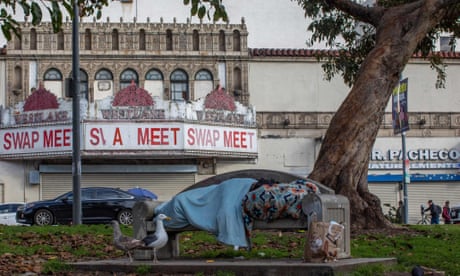
A Lahsa spokesperson said that the agency had talked to eight encampment residents on Tuesday, but he did not confirm whether any were successfully placed into housing.
Comeaux said Caltrans had brought “personal belongings left behind” to a nearby maintenance yard where they would be stored for a few weeks, and that the agency had posted notices about the “cleanup” 72 hours in advance. Comeaux said that if a couch or mattress looked to be in “unusable condition”, the crew would dispose of it.
Madeline deVillers, another advocate working with the residents, said Caltrans had showed up hours earlier than some residents had expected and that she had witnessed people’s belongings being thrown out. She estimated that more than two dozen people had been displaced by the sweep and said she did not personally know of anyone who received any form of housing or shelter. Most people were camping around nearby streets, she said.
While Caltrans has said a “fire safety” concern was driving the cleanup, advocates questioned why the whole camp had to be closed. And a worker on site told the local station KTLA that the Super Bowl was the impetus for the sweep.
“No one wants to take responsibility for what is happening,” said Annie Powers, an organizer with NOlympics LA, a coalition that has organized against the Olympics in 2028 in LA, partly out of concern that it will lead to these kinds of sweeps. “We see this time and time again – with sports capitalism, celebrations or other big events like the Super Bowl or Olympics, the city tries to make the city look better for investors coming from out of town. So they’re very encouraged to try to disappear the poor from the streets.”
The residents there had a wide range of experiences that led them to the streets, Villalpando said, including some whose partners had died, resulting in a loss of financial stability, and others out of work due to injuries. Some had previously been displaced from another area that went through an encampment sweep: “It’s such a broken system and I don’t feel like there is any accountability.”
Toftee, the displaced resident, said she did not mind officials cleaning up the area, but that she wished they could return to the site, where she said she had been camping for roughly two years.
“I am tired of being on the streets, and I don’t want to die here,” she said, noting that she had multiple unhoused friends who had died recently. A recent UCLA report estimated that 1,500 unhoused people died while living on the streets from March 2020 to July 2021. Toftee said she wished elected officials understood their experiences: “Why don’t they come and spend a day or two out here, and see what we’re going through?”
“I have nowhere to go,” added Dawn Wilson, 49, another displaced resident, who said she wasn’t offered housing and was now camping on a sidewalk with her dog. “They don’t care what happens to us.”
NFL spokespeople did not immediately respond to an inquiry on Wednesday afternoon.
A Disappearing Act: Out of Sight, Out of Mind
RFK Human Rights
Jan 22, 2023 —
Robert F. Kennedy summed it up best: “I believe that, as long as there is plenty, poverty is evil.” The United States houses the most billionaires in the world, yet hundreds of thousands remain without shelter or homes across the nation. And disturbingly, instead of leveraging American talents and resources to provide long-term solutions to this problem, so-called progressive leaders are doubling down on failed policies of the past. In California and New York, new government programs use old tactics of policing, incarceration, and institutionalization in a failed attempt to disappear homelessness from public view.
In December 2022, New York City Mayor Eric Adams ordered NYPD beat officers to remove people they deem mentally ill from the streets and subways by involuntarily hospitalizing them. Only months earlier, Adams ordered the destruction of homeless encampments across the city, demolishing around 245 encampment sites, a policy shift toward homelessness that he continues to implement today. People targeted by the encampment sweeps lose what little personal items they own, including clothes, sleeping bags, and sentimental items. One person caught in the crosshairs of a sweep reported that he was thrown on his head, cuffed to a hospital bed, and later taken to jail. Prior to the sweeps, service providers could have helped address the root causes of homelessness by enrolling people in encampments in voluntary programs that provide medical services or food to eat. Now, their time and resources are instead spent in scavenger hunts for homeless New Yorkers forced to seek a new place to sleep daily to avoid arrest.
But New York is not unique in criminalization of the homeless, mentally ill, and other marginalized groups. In September 2022, San Francisco Mayor London Breed was sued by homeless city residents for her policy of brutal encampment sweeps. In July 2022, hundreds of people protested a Los Angeles anti-camping ordinance that criminalized sleeping in parts of the city. Reflecting a deeply entrenched hypocrisy, politicians publicly proclaim the need for a humanitarian approach to homelessness, but propose budget cuts to crucial social services that might lift people out of homelessness once and for all. Meanwhile, they quietly adopt inhumane policies like police sweeps and forced hospitalizations in an attempt to disappear people from constituents’ sight without addressing the deeper social problems that lead to homelessness in the first place.
One example of this contradictory stance is California’s newly adopted CARE court, set to launch in October 2023. Although presented as a new treatment model for mentally ill people, CARE court dangerously increases the scope of police and judicial power by giving beat officers the ability to funnel people they encounter on patrol into a compulsory scheme of court-based mental health assessment. Judges that deem people to have an untreated mental health disorder that they refuse to voluntarily treat can subject them to up to 2 years of court surveillance, including conservatorship and court-ordered medication.
Successful medical care depends on consent and compassion, wherein an autonomous patient willingly agrees to accept treatment from a professional who is ethically sworn to do no harm. In contrast, our legal system measures success by compulsion and captivity. Police, judges, and prosecutors are trained to view punishment and incarceration as the solution to conflict, relying on the fallacy that the more people we lock away, the safer we are. This same fallacy taints CARE court provisions that condition mental health and medical attention, resources, and services on forced interactions with the police and court system.
Justification for compulsory mental health programming is shrouded in benevolent language: isn’t this an attempt to bring more compassionate tools to our criminal legal system? But if the state was truly interested in helping people who live in the streets, wouldn’t it be wiser to invest in resources that prevent them from ending up there in the first place? And is a police officer or a judge, untrained in diagnosis and unbound to the ethical rules of the practice of medicine, really the best person to make private medical decisions for someone? These questions help us see what is truly at the core of compulsory mental health interventions led by the criminal legal system: disappearing people. Granting police the power to initiate compulsory mental health treatment for people living without stable housing is driven by discomfort at seeing poverty, not the cruelty of state sanctioned poverty itself. By forcing marginalized groups out of public view, the public, and the stakeholders failing to alleviate these problems, can merely pretend the issue does not exist.
Rather than turning a blind eye, we must take action, be intentional, and, most importantly, treat people with dignity and respect. State and local leaders can put more resources towards permanent housing and expanding access to free and low-cost medical and mental health care. Police departments and prosecutors can use discretion by refusing to enforce laws that criminalize loitering, sleeping in public, and jaywalking. Politicians can repeal those laws, which are currently selectively wielded to punish a person’s homelessness. As alternative courts proliferate, community groups can implement court watch programs for public oversight to ensure that judges are responsibly using their authority. And each of us can commit to holding our representatives accountable to lawmaking that guarantees livable wages.
Professor Angela Davis noted that “Homelessness, unemployment, drug addiction, mental illness, and illiteracy are only a few of the problems that disappear from public view when the human beings contending with them are relegated to cages.” But “[p]risons do not disappear social problems. They disappear human beings.” Mayors across the country that look to police power to solve social problems will end up with policies that render certain groups of people invisible by forcibly caging them. In doing so, they not only fail to address root causes of these problems, they exacerbate them.
The Vanishing | Ross Barkan
The Baffler
Oct 3, 2019 —
, October 3, 2019

DONALD TRUMP WANTS TO GET RID OF HOMELESS PEOPLE. “We have people living in our . . . best highways, our best streets, our best entrances to buildings . . . where people in those buildings pay tremendous taxes, where they went to those locations because of the prestige,” Trump complained during a fundraising trip to California, where homelessness has skyrocketed over the last several years. “We can’t let Los Angeles, San Francisco, and numerous other cities destroy themselves by allowing what’s happening.”
As a malignant narcissist, Trump can’t be said to truly care about anything, but solving the urban homelessness crisis has never been high on his list. Degraded enough by rapacious capitalism and a failed mental healthcare system, the homeless can’t be exploited for any kind of material gain. They are not like us and exactly like us. A few bad breaks, and we can easily join their ranks.
Trump, fueled by Fox News and a few sycophantic aides, is now onto his solution: getting the homeless out of sight and mind. The White House issued a report that calls for more policing to chase the undesirable homeless from the street, as well as the building of new market-rate housing. Trump’s Environment Protection Agency has also slapped San Francisco with an environmental violation for water pollution caused by homeless people.
Pay attention once more to Trump’s words. The homeless ruin the “prestige” of a city that should be akin to a luxury product, to borrow a term from another New York billionaire, Michael Bloomberg. People, wealthy people, pay taxes to live in cities and should not be encumbered with homeless in their midst. Otherwise, can the “best streets” and “best entrances” to buildings be the very best?
If Trump is not quite the midcentury fascist the most hysterical of liberal commentators have made him out to be, he is something both more humdrum and disturbing: an American authoritarian. In his call for the eradication of the homeless, he does not appeal to any redemptive future for those who live precariously on city streets. Rather, these people are erased so those with money and power can enjoy a guilt-free stroll. Police chase the homeless from one part of town to another—go there, not here. Anywhere but here.
Fighting for the cause in the White House is an authentic American authoritarian, Rudy Giuliani, who spent eight years as mayor of Trump’s hometown, New York City. Under Giuliani, the police department was trained to criminalize poverty and harass people of color, cleansing the streets for gentrification to take root. It was in the 1990s that New York City, like other urban centers, began its mutation from a multiracial, working-class hub to a repository for global capital, unleashing the nonstop luxury development and shredding of rent regulations that fueled inexorable hikes in rent.
Like all good authoritarians, Trump can deny the homeless agency and humanity.
The shockwaves would come in the 2000s and 2010s, when the inevitable result of policies geared toward making cities habitable for the oligarch class drove tens of thousands to homelessness. Their aesthetic shocks the sensibilities of global capital’s megacities: raggedy men and women asking for money or resting on a street corner are discomforting reminders of all the ways the modern society has fundamentally failed its most vulnerable.
Trump, of course, is not bothered by a restive conscience. The authoritarian urge comes from elsewhere—the desire to disappear people, to erase and negate the histories of those who are deemed of little consequence. If enough police roam the streets, the dark logic goes, the homeless will have to flee the seats of global capital and take root elsewhere. Where? Anywhere. It only matters that they don’t clog up the best streets, that they don’t harm market value, that they are not seen and certainly not heard. In this sense, like all good authoritarians, Trump can deny the homeless agency and humanity.
Let’s not make the mistake of ascribing this approach singularly to Trumpists. Democratic executives have similarly sought, over the years, to criminalize the act of homelessness without offering a viable pathway to a life after. Beyond the socialist left, no one talks about a universal right to housing, the obvious idea that a safe and habitable place to live, like healthcare or quality water, should be a guaranteed right at birth. The market will not save us.
To police the homeless off the streets is to forget they ever existed at all, the tactic of any routine authoritarian regime. This has bled and dried in the American fabric. We are too often a nation of amnesiacs. At the point erasure is attempted, humanity ceases, and the full barbarism of the state is unleashed. The act of forgetting can be an act of violence. Why help those no longer in view?
If a person can’t survive by the acid terms of the market, they don’t deserve to survive at all.
In Yoko Ogawa’s newly translated novel, The Memory Police, objects like birds, calendars, and roses suddenly disappear, never to be seen again. Those that choose to remember them are menaced by the so-called Memory Police until they forget. Life, however, goes on. “We shrug them off with as little fuss as possible and make do with what’s left. Just as we always have,” Ogawa writes. The Memory Police is as much a meditation on dying and loss as it is a political novel—we all will one day, painfully, recede from the worlds we once knew—but it speaks to the impulse, prevalent in all societies with authoritarian appetites like ours, to rewrite and altogether discard what, in one moment, may seem like a hardened reality.
Trump, of course, has not read The Memory Police because he does not read books, which require a degree of patience and internal reflection far beyond his grasp. Were he ever to, he may find some comfort in a state-sponsored force unilaterally nullifying certain aspects of reality. He is not alone: American capitalism has a long history of practicing erasure. If a person can’t survive by the acid terms of the market, they don’t deserve to survive at all.
Breaking up a homeless encampment and swabbing the grounds where the dispossessed once slept can help to cancel out the memory of their presence, but it brings them no closer to finding shelter. What it does do is make it easier, temporarily, for passerby to shrug them off, as those living in Ogawa’s dystopia do to the vanished birds. Once they are gone, harassed from view, memory itself can dematerialize. There is no need to remember the savage inequities that produce a society where a few individuals can amass billions while millions live in abject poverty. None of it is sustainable, but all of it can be forgotten.
spacer
Making the Homeless Disappear: Redefining Homelessness in Massachusetts
University of Massachusetts Boston
Abstract
While unemployment rocked Massachusetts, housing costs remained at record levels, and the federal government continued its inattention to housing and human service programs, the numbers of homeless families sheltered by the commonwealth of Massachusetts declined. This article examines the changes over the last decade in the way Massachusetts provides shelter to homeless families. What has in fact changed for homeless families, Marsh contends, is whether the state of Massachusetts considers them homeless. An increasingly complicated and burdensome set of rules has become a highly effective gatekeeper that keeps the commonwealth’s shelter expenditures down and homeless families out.
Recommended Citation
Marsh, Sue (1992) “Making the Homeless Disappear: Redefining Homelessness in Massachusetts,” New England Journal of Public Policy: Vol. 8: Iss. 1, Article 45.
Available at: https://scholarworks.umb.edu/nejpp/vol8/iss1/45
Unseen in life, invisible in death: Many of Maui’s homeless residents are still missing
NBC News

Jelena Dackovic, the former director of the Maui Rescue Alliance, and Rex Cole.Courtesy Jelena Dackovic
LAHAINA, Hawaii — Where is Rex Cole?
The question haunts residents and homeless-service providers who came to know the kind, white-bearded man before wildfire barreled through Lahaina, killing or displacing hundreds of people, including those who had been homeless before fire destroyed scores of houses.
They wonder what became of Cole, one of the most recognizable faces in the historic district, who smiled at just about everyone who walked by.
The full scale of the fire’s impact on Lahaina’s unhoused community has not fully emerged, but many worry the town’s most vulnerable residents are among those hardest hit by the devastation: Unseen in life, they are now invisible in death.
“Sometimes they don’t have the emotional or mental ability to advocate for themselves,” said Lisa Darcy, founder of Share Your Mana, a Maui-based homeless advocacy group. “It’s beyond a crisis.”
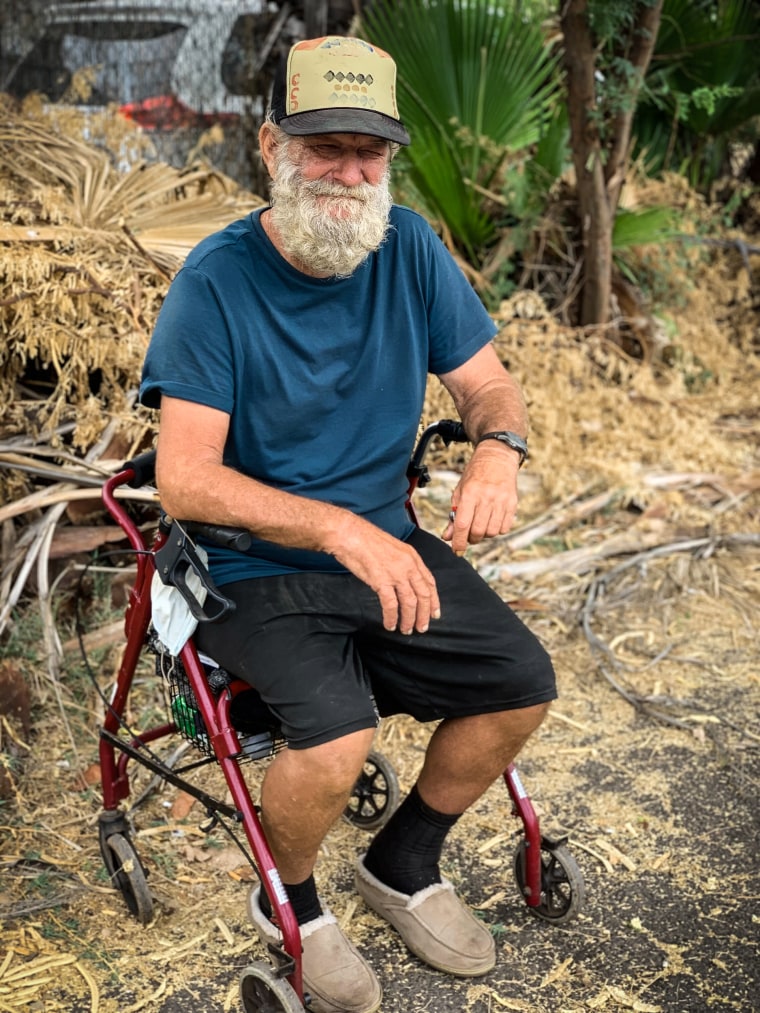
Darcy is among those who encountered Cole on the streets of Lahaina over the years. Another is Jelena Dackovic, former director of the Maui Rescue Alliance, who said Cole loved to sit under the plumeria tree near the wharf and comment on Vans shoes worn by passersby.
“I think it reminded him of living in California,” Dackovic said.
People who knew Cole switch between present and past tense when referring to him. He has not been seen or heard from since wildfire leveled what was once the capital of the Kingdom of Hawaii, leaving behind little but toxic ash, soot and destruction.
At least 114 people have been confirmed dead, and officials say an estimated 1,000 more could still be unaccounted for, making the complicated process of locating and identifying deceased victims even more difficult.
Finding missing or dead homeless residents is especially tricky because they do not always carry cellphones or have a dedicated group of people checking in on them.
According to the 2023 federal point-in-time count, a total of 6,223 people experienced homelessness in the state of Hawaii. The majority, 4,028, were on Oahu, and 704 lived on Maui.
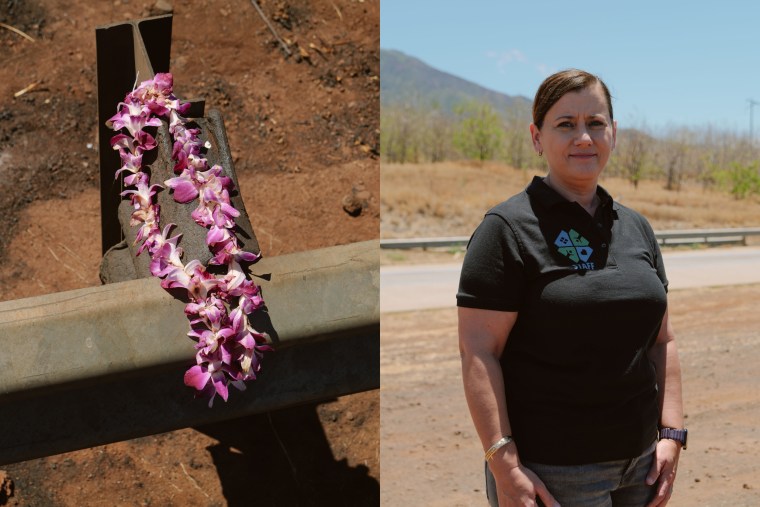
“The crisis remains shrouded in mystery,” said Monique Ibarra, outgoing director of Ka Hale A Ke Ola Homeless Resource Centers.
When asked if she suspects Lahaina’s homeless residents comprise many of those still missing, Ibarra said: “Absolutely.”
Ka Hale A Ke Ola’s Lahaina center, which housed more than 200 people, was one of at least 2,200 structures destroyed in the fire. Its Wailuku facility on the other side of the island was untouched and is now filled with evacuated homeless people.
Cole is not among them.
“I saw him right before the fire,” said Chuck Challis, a friend of Cole’s.
Sitting in a wheelchair outside a closed Ross discount store in Lahaina, Challis forked a plate of rice and meat provided by relief workers as survivors plucked through bins of clothing, dry goods and other donations.
Challis, who has been homeless on Maui for seven years, said he was nearly overrun by a firestorm so ferocious it felt like cannonballs were whizzing by his head.
He had been drinking beers with six friends at his usual haunt near the now-destroyed Pioneer Inn, the oldest continually operating hotel in Hawaii, when Challis saw heavy smoke billowing toward them.
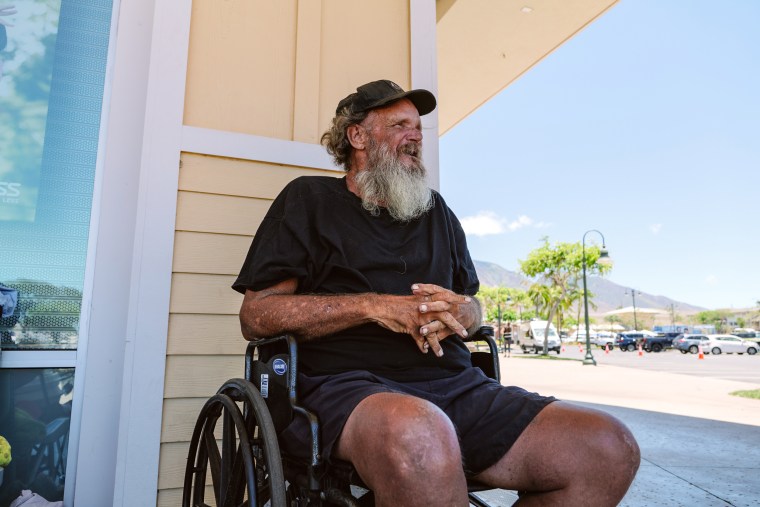
“Firefighters had no water and the cops had no imagination,” he said. “They abandoned us all.”
A lack of water on an island with limited supply conspired with high winds to create an inferno unlike anything Maui has ever seen.
Challis and his friends fled in all directions, but he moved slowly in his wheelchair with a companion who had lost his walking cane. The friend held onto the back of Challis’ chair as the two inched to safety.
The group found refuge near a tennis court and watched their beloved Front Street burn.
“Has anyone seen Rex?” he remembers someone asking.
Friends hoped Cole would pop up at his favorite homeless shelter, Ka Hale A Ke Ola’s Wailuku center, but Ibarra said none of her outreach workers had heard from him.
Stephanie Commy, a relief volunteer in Lahaina, said she last saw Cole when the pandemic was at its peak and she and a friend were making giant bubbles near Front Street. Because Hawaii was closed to tourists, their only audience was a small group of homeless people hanging out in the park. Cole was there.
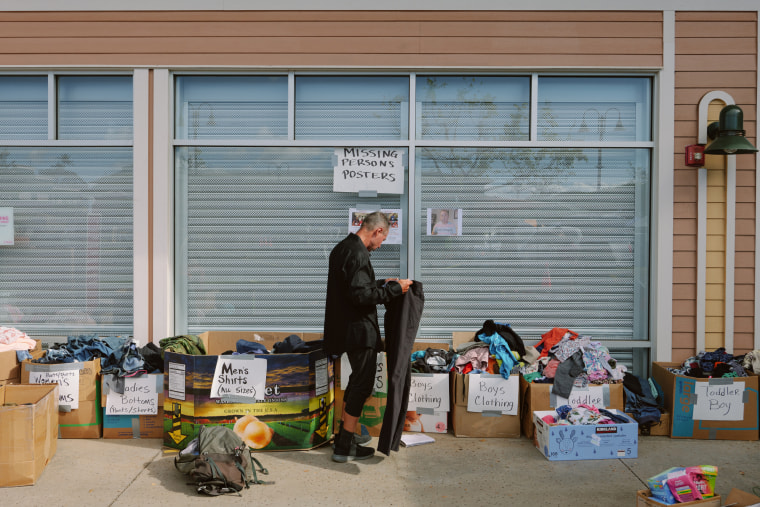
Homelessness has long been a contentious issue in Hawaii, which relies heavily on tourism to maintain its economy. In Maui, officials have adopted a housing-first model, meaning resources are focused on getting homeless residents into temporary or emergency shelters before offering social services, Ibarra said.
The policy, which has been adopted in parts of California and other locations in the continental U.S., has come under criticism for allowing unhoused people to languish in the streets before a bed is found for them.
In Hawaii, some lawmakers have proposed sending homeless people from other states back to the mainland, while others prefer to clear out encampments from highly trafficked areas, including in parts of Maui.
The tension has sparked at least two lawsuits over whether homeless people can be moved if they have nowhere to go.
Maui officials who handle homelessness did not respond to multiple requests for comment. The Federal Emergency Management Agency and the Red Cross could not immediately be reached for comment on Cole’s whereabouts.
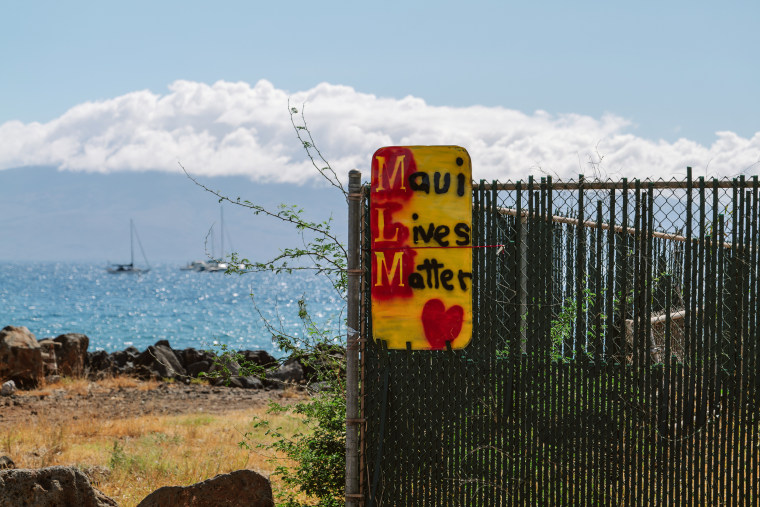
In the hours after the fire started Aug. 8, Dackovic, who now lives in Florida, activated her “coconut network” of outreach workers and program directors on Maui to create a spreadsheet of missing homeless people who had still not been found.
Most of the 209 people who first appeared on the list have been located, she said, but more than 30 remain unaccounted for, including Cole.
“People living on the streets are very resilient, very resourceful,” she said. “I like to think those skills they developed out of a desperate situation helped them run away. I need to keep that in my heart because otherwise it’s too tragic.”
Jul 3, 2017 —
Cities are getting pricier. Federal funding is getting scarcer. And Americans who need emergency shelter are suffering the consequences.

This article originally appeared in CityLab.
Anita Beaty sees enemies on all sides.
Following years of litigation, the emergency overflow homeless shelter that Beaty operated in downtown Atlanta for 20 years will close on Aug. 28. She says that the local government and business community has been after the property at the plum intersection of Peachtree and Pine streets from the day it opened in 1997.
City council members, the last three mayors, Atlanta police, the 1996 Summer Olympics—Beaty fingers all of them and more as forces arrayed against her shelter. “There was never any help from the city,” she says. “The developers really cemented their control over Atlanta, to re-envision and redevelop Atlanta. Now the only housing policy in the city is gentrification.”The Lie at the Heart of OverturningRoe Is Now in Plain Sight
Beaty retired this year as director of the Metro Atlanta Task Force for the Homeless, which filed a lawsuit in 2010 against a host of parties, alleging that the shelter was the victim of a civil conspiracy. Earlier in June, the task force reached a settlement agreement with Central Atlanta Progress, a private nonprofit business membership organization that manages the Downtown Business Improvement District.
The Atlanta Journal-Constitution reports that Central Atlanta Progress paid $9.7 million for the 100,000-square-foot building, which was foreclosed on by lenders in 2010. Atlanta Mayor Kasim Reed threatened to use eminent domain to seize the shelter if the courts didn’t do the trick. Central Atlanta Progress and other involved parties declined to comment on the specific allegations, citing the settlement agreement.
Privately, Atlanta leaders may breathe a sigh of relief when the massive shelter closes at the end of the summer, in the hopes that the problems that accompanied it—the crowds of homeless men and women it drew, the tuberculosis outbreaks every few years—disappear. But the city may then face a more daunting challenge: What happens to the men, women, and families—usually 400 to 500 people, but sometimes more than 1,000 on a given night—who occupy the shelter?
Atlanta is hardly alone. Across the country, downtown homeless shelters are caught in a perfect storm. Property values throughout America’s urban cores are rising, making the work of sheltering the disadvantaged less sustainable and desirable downtown, even as displacement adds to their ranks. Plus, scarce federal dollars for supporting the homeless are increasingly directed toward programs that provide housing for the chronically homeless—which is great, and a big success, but not so helpful for families who are struggling with a sudden crisis that has put them on the streets.
Meanwhile, the nation’s opioid crisis is rapidly changing the face of those living in homelessness, affecting a growing number of suburban and rural victims. Still, this population too often ends up in the city, turning to downtown shelters to meet their needs—especially those shelters that do not require sobriety as a prerequisite. The strain is showing. Compared with the structural stresses on downtown shelters, local politics is nothing.Leaders in Atlanta needs to resolve all of these problems within the next 57 days. Which raises the question: If the problem of homelessness is so tractable that it can be solved in a matter of weeks—before the end of summer—why hasn’t Atlanta stepped up with this plan before now?
“A lot of [Atlanta] communities have relied on Peachtree and Pine as the shelter of last resort,” says George Chidi, social impact director for Central Atlanta Progress and the Atlanta Downtown Improvement District. “What that means, broadly, is that other shelters have been able to maintain what I would describe as an artificially high standard. They’ve been allowed to maintain barriers to entry that have made staying there prohibitive to people.”
Like many other metro hubs large and small, Atlanta boasts soaring rents, escalating suburban poverty, and insufficient shelter space downtown. Advocates and elected officials may find building a substitute for Peachtree–Pine damn near impossible, thanks to these factors and others, ranging from the hyperlocal to the federal in scope.
At the broader scale, federal funding is tilted in one direction: finding permanent housing for the chronically homeless. That’s been the case since 2002, when Mel Martinez, then-secretary for the U.S. Department of Housing and Urban Development, announced an ambitious strategy for ending homelessness. The model, known as Housing First, is an old idea. But for the government, the idea of providing the homeless with a permanent roof over their heads fast, before services like drug treatment or job training, was novel. In fact, it was one of the biggest federal moves on homelessness since the McKinney–Vento Homeless Assistance Act of 1987, the first bill to provide federal money for homeless shelters.
After reinvigorating the U.S. Interagency Council on Homelessness (under director Philip Mangano), the George W. Bush administration zeroed in on one category specifically: the chronically homeless. Mostly men, many of them veterans, many of them suffering mental disabilities or substance addiction. At HUD, Housing First means giving homes to the chronically homeless, substance abuse or criminal history be damned, as a cheaper and more humane alternative to letting them linger in jails or hospitals or die in the streets.
That emphasis on chronic homelessness carried over into the Obama administration. Housing First is less a program than a policy orientation, as Ann Marie Oliva, deputy assistant secretary for special needs assistance programs at HUD, explained in a 2014 memo. Since 2009, HUD has upped the funding available to Continuums of Care—these are regional or local coordinating bodies for homeless aid—that take a Housing First approach.
Permanent housing is on the rise. In the chart below, the red line represents permanent supportive housing, which means a lease and supportive services for a person with a disability contributing to chronic homelessness (or a family with a child who has a disability). The other permanent-housing category is Rapid Rehousing, a program launched in 2012—represented by the green line—to move homeless individuals or families into homes tout suite, disability status notwithstanding.
Michael Smolens: The homeless camping ban and the power of suggestion
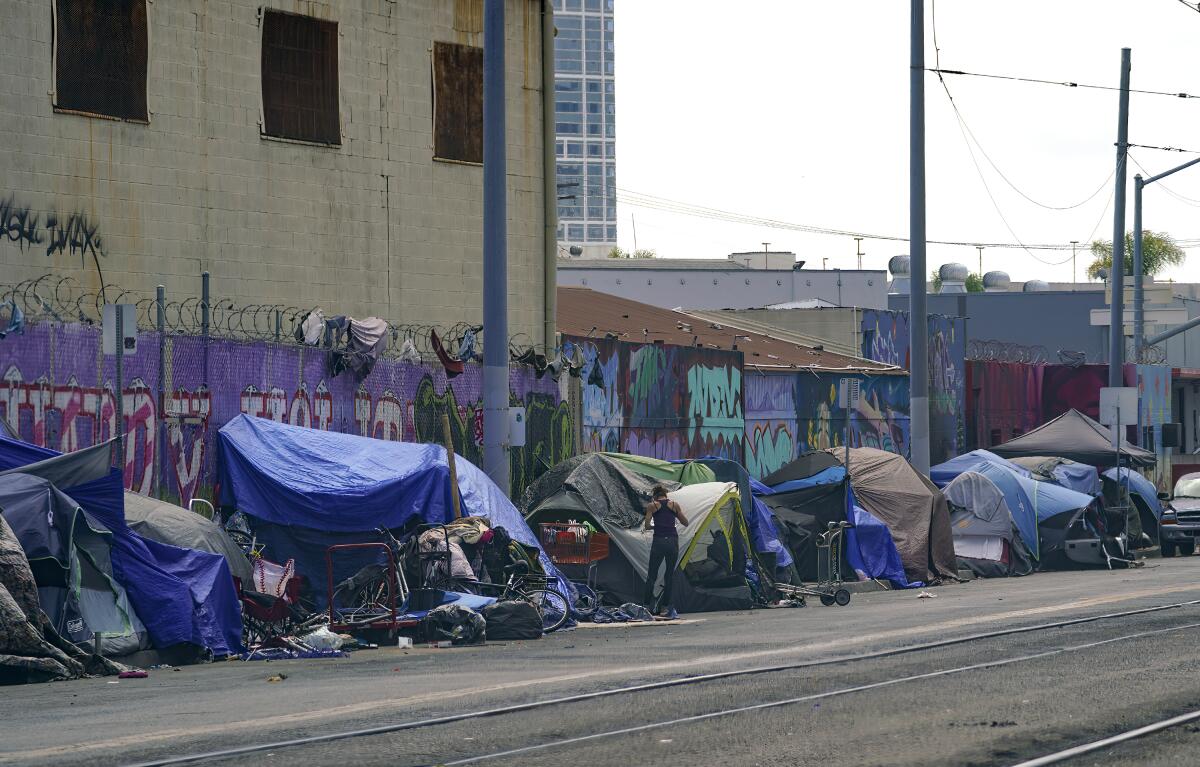
Homeless population downtown drops dramatically, police say they’re not seeing as many encampments in Balboa Park. Where did the people go?
There’s been a noticeable change in downtown San Diego: Many of the once-ubiquitous tents used by homeless people have disappeared.
This observation comes just a month after the city’s new public camping ban took effect.
Actual enforcement of the law apparently didn’t have much to do with that, given reports early last week revealed that under the ordinance there were no arrests and just a handful of citations issued, which were given out around Balboa Park.
Police said they have also encountered fewer homeless encampments in and around the park.
Where these people went is anybody’s guess at the moment, though there’s anecdotal evidence they may have migrated to other regions of the county that have experienced an increase in homelessness.
There’s suspicion that the San Diego River bed, long a magnet for encampments, may be becoming more populated. But as yet there’s no data to back that up.
One place most of these homeless people didn’t go is to shelters. Those facilities are always close to full and don’t have many beds open on any given day. And, as has been reported repeatedly, not all open beds are appropriate for certain people — say, a top bunk bed for a person with physical disabilities.
Further, Blake Nelson of The San Diego Union-Tribune noted on Monday that only a handful of people encountered by law enforcement accepted offers of shelter beds, according to police. In most areas, the ordinance can only be enforced against someone if an adequate shelter bed is available and they refuse to take it.
Neither the seemingly low-key kickoff of the ordinance nor the apparent shrinking visibility of homeless people in those two areas of the city should come as a surprise.
The new law faced plenty of opposition and a harsh, jackbooted initial response by authorities would not have gone over well.
Besides, the power of suggestion may have given a veneer of progress even before the ordinance took effect. Outreach workers had spread word of what was likely coming.
“When we went into Balboa Park, we expected … more encampments,” Capt. Shawn Takeuchi, head of the city’s neighborhood policing division, told Nelson. “They chose to leave on their own.”
Takeuchi said there had been 88 warnings under the camping ban by the end of last month, but police did not provide further details, such as the locations where they were issued. That number also does not include possible warnings or actions under other laws, like the city’s encroachment ordinance, which has been used to move homeless people out of the public right of way.
It’s hard to say whether the situation in Balboa Park and downtown, however superficial it may be, will relieve pressure on Mayor Todd Gloria, who has been under fire for both not cracking down enough on homelessness and ramping up enforcement too much.
It’s instructive that some change has occurred in those particular locations, though not everyone agrees it has.
Public frustration over homelessness has been building for years, but heightened action seems to happen when complaints by influential San Diegans — particularly downtown interests — reach a crescendo.
That occurred with former Mayor Kevin Faulconer as it has with Gloria.
Everybody wants a long-term, comprehensive solution to homelessness. But a lot of people also want homeless people off the street and, to put it bluntly, out of sight — now. Whether what appears to be occurring now assuages those demands remains to be seen.
The decrease in downtown homelessness has been dramatic, according to data compiled by the Downtown San Diego Partnership. In May, there were more than 2,100 homeless people living in and around downtown. The number has dropped each month since, to 1,268 in August. That’s still a lot of people out on the street, however.
The enforcement focus on Balboa Park certainly hasn’t mollified Bill Walton, the civic figure and former NBA star who continues to be one of Gloria’s most unrelenting critics on homelessness.
Walton has lived in Hillcrest on the edge of Balboa Park for more than four decades and has repeatedly vented his outrage at the mayor publicly for what he says has been the degradation of the city’s crown jewel.
In a commentary published by the Times of San Diego on Thursday, Walton rejected what he said are Gloria’s “claims he’s cleaning up from the disastrous mess that his homeless crisis has created for all of us.”
San Diego’s homeless population has grown in recent years, though the city’s unsheltered population at times has been slightly larger in the past. One difference is that there have been greater concentrations in downtown and possibly Balboa Park.
“A closer look at the numbers over the past decade shows there were times when the countywide population of homeless people living outdoors was larger than today,” according to a Union-Tribune story in June about the annual homeless count.
“Downtown San Diego, however, has seen the number of people living on sidewalk encampments surge to almost 2,000, making the crisis more visible than ever.”
Another difference may be there were more tents, which increased the visibility of homelessness. In recent years, some volunteer groups distributed free tents to provide homeless people with some shelter.
This is not to suggest homelessness is less of a problem than before. The homeless counts take place on one day each January, and some say it’s a flawed snapshot. The true picture may be told by the number of people seeking homeless services, which has skyrocketed in recent years.
The pace of people falling into homelessness regularly outpaces people gaining housing.
What the future holds is uncertain, but it doesn’t seem any big improvement on the homeless front is coming soon, even if unsheltered people are clearing out of certain areas.
Better assessments of how the camping ban is working will come with time, if and when data surfaces about where people have gone.
Meanwhile, more shelter options will be coming online, including another “safe sleeping” site for up to 400 tents at Parking Lot O in Balboa Park. But other shelters are being shut down or moved, including one at Golden Hall and, by the end of the year, the one at the city maintenance yard at 20th and B streets, which has space for 136 tents.
But none of the homelessness policies now in place will provide enough beds for all of the region’s unsheltered people in the foreseeable future.
What they said.
From a Los Angeles Times story on this being the warmest summer on record in the Northern Hemisphere.
“‘Earth is now well outside of the safe operating space for humanity,’ the study said.”
